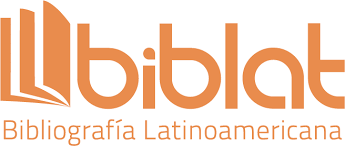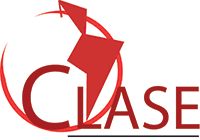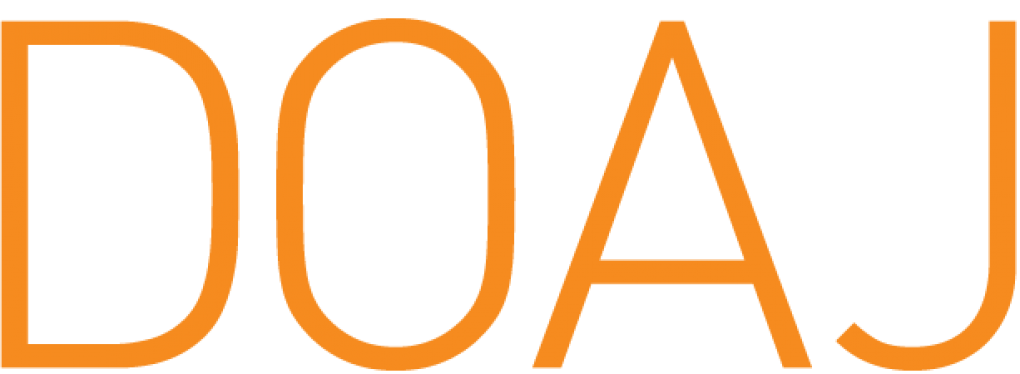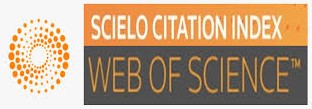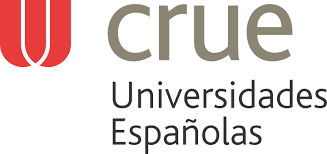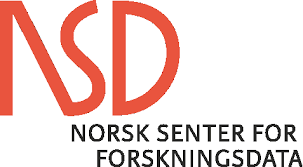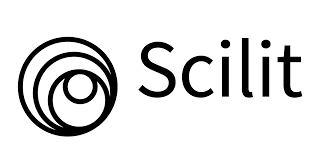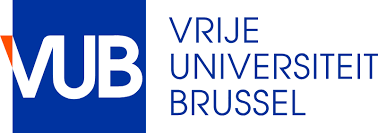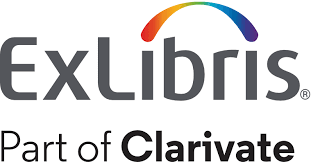Semantic knowledge in the representation of problems of differential equations as mathematical models
DOI:
https://doi.org/10.22335/rlct.v7i3.523Keywords:
problem solving, modeling cycles, word problems, external representations, extra mathematical knowledge, mathematical modelingAbstract
This article presents the characterization of the semantic knowledge evidenced by a group of students in the external representation to problems of second order linear differential equations as mathematical models. The work was quantitative exploratory and descriptive using a questionnaire in the collection of information. The theoretical support that gave meaning to the study was the two-stage model proposed by Mayer R. for solving mathematical problems, the modeling cycle under the cognitive perspective according to Borromeo Ferri and the theory of representations of Goldin and Kaput. The research focused specifically on the representation phase of the model. Among the main findings is that each participant makes his own external representation to concepts such as: mass-spring system, weight, mass, equilibrium point, constant of elasticity, equilibrium point, Hooke's law, damping force, external force, law of Newton, among others. Difficulties are also evident in the transition from natural language to mathematical language and the external representation of each of the signs, symbols or mathematical expressions involved in the word problem, because the resolver has to construct a mental model of the real situation and translate it into a mathematical model. This demonstrates the importance of semantic knowledge in the translation stage when trying to solve problems as real situations to be modeled.
Downloads
References
Allexsaht-snider, M., & Hart, L. (2001). “Mathematics for All”: How Do We Get There? Theory into Practice, 40(2), 93-101.
Barrantes, H. (2006). Los obstáculos epistemológicos. Retrieved Marzo 15, 2016, from Cuaderno de Investigación y Formación en Educación Matemaica: https://revistas.ucr.ac.cr/index.php/cifem/article/viewFile/6886/6572
Bassanezi, R., & Biembengut, M. (1997). Modelación matemática: una antigua forma de investigación, un nuevo método de enseñanza. Revista de Didáctica de las Matemáticas, 32, 13-25.
Berdugo Oviedo, G. (2004). Comprehension and representation of algebra word problems in a second language. Berdugo Oviedo, G. (2004).
ComprehensioAvailable from ProQuest Dissertations & Theses A&I: Social Sciences.
Blum , W., & Niss, M. (1991). Applied mathematical problem solving, modelling, applications, and links to other subjects—State, trends and issues in mathematics instruction. Educational studies in mathematics, 22(1), 37-68.
Blum, W., & Borromeo Ferri, R. (2009). Mathematical Modelling : Can It Be Taught And Learnt ? Journal of Mathematical Modelling and Application, 1(1), 45-58.
Borromeo, F. (2006). Theoretical and empirical differentiations of phases in the modelling process. ZDM - International Journal on Mathematics Education, 38(2),, 86-95.
Calle, C. E. (2013, Septiembre 13). Influencia de la semántica en el aprendizaje de las matemáticas en el segundo curso de bachillerato del Colegio Benigno Malo. (Trabajo de grado de Maestría). Retrieved from http://dspace.ucuenca.edu.ec/bitstream/123456789/4693/1/Tesis.
Camarena, G. P. (2009). La matemática en el contexto de las ciencias. Innovación Educativa, 9(46), 15-25.
Dostál, J. (2015). Theory of Problem Solving. Procedia - Social and Behavioral Sciences, 174,, 2798-2805.
Dreyfus, T. (2002). Dreyfus, T. (2002). Advanced mathematical thinking processes. In Advanced mathematical thinking. Springer Netherlands, 25-41.
Dubinsky, E. (1991). Dubinsky, E. (1991). Reflective Abstraction in Advanced Mathematical Thinking. Dubinsky, E. (1991). Reflective Abstraction in Advanced Mathematical ThinkDordrecht: Springer Netherlands: Dubinsky, E. (1991). Reflective Abstraction in Advanced Mathematical ThinkIn D. Tall (Ed.), Advanced Mathematical Thinking (pp. 95–126).
Edmonds-Wathen, C., Trinick, T., & Durand-Guerrier, V. (2016). Impact of Differing Grammatical Structures in Mathematics Teaching and Learning. In R. Barwell, P. Clarkson, A. Halai, M. Kazima, J. Moschkovich, N. Planas, … M. Villavicencio Ubillús (Eds.) . Mathematic Education, 23-46.
Goldin, G. A. (1998). Representational systems, learning, and problem solving in mathematics. The Journal of Mathematical Behavior, 17(2), 137-165.
Goldin, G. A., & Kaput, J. J. (1996). A Joint Perspective on the Idea of Representation in Learning and doing math. Theories of Mathematical Learning, 397-430.
Guerrero, J. G. (2012). Las matemáticas en Ingeniería: todo un reto pedagógico. Ed. Coruniamericana. 1(1)., 75-80.
Haghverdi, Majid, Semnani, Ahmad Shahvarani, Seifi, & Mohammad. (2012). The relationship between different kinds of students' errors and the knowledge required to solve mathematics word problems. Bolems. Bolema: Boletim de Educação Matemática, 26(42b).
Hashemi, N., Abu, M., Kashefi, H., & Rahimi, K. (2014). Undergraduate Students’ Difficulties in Conceptual Understanding of Derivation. Procedia - Social and Behavioral Sciences, 143,, 318-366.
Ilany, B., & Margolin, B. (2010). Language and mathematics: Bridging between natural language and mathematical language in solving problems in mathematics. Creative Education, 1(3),, 138-148.
Intaros, P., Inprasitha, M., & Srisawadi, N. (2014). Students’ Problem Solving Strategies in Problem Solving-mathematics Classroom. . Procedia - Social and Behavioral Sciences, 116, , 4119-4123.
Investigating challenges that Grade 11 mathematics learners face when translating from word problems to linear algebraic representations. Electronic Theses and Dissertations. (2015, julio 17). Retrieved from http://wiredspace.wits.ac.za/handle/105391/17633
Kaiser, G., & Sriraman, B. (2006). A global survey of international perspectives on modelling in mathematics education. . Zdm, 38(3),, 302-310.
Kashefi, H., Ismail, Z., & Yusof, Y. (2010). Obstacles in the Learning of Two-variable Functions through Mathematical Thinking Approach, Procedia - Social and Behavioral Sciences, 8, 173-180.
Madzorera, A. (2015). Investigating challenges that Grade 11 mathematics learners face when translating from word problems to linear algebraic representations. Electronic Theses and Dissertations. Retrieved Julio 17, 2015, from http://wiredspace.wits.ac.za/handle/10539/17633
Mayer, R. (1986). Thinking, Problem Solving, Cognition. Barcelona: (Trad. Graziella Baravella). (1a ed.). Barcelona: Ediciones Paidos. (Original publicado en 1983).
Moreno, M. M. (2005). El papel de la didáctica en la enseñanza del cálculo: evolución, estado actual y retos futuros. Noveno simposio de la sociedad española de Educación Matemática., 81-96.
Muir, T., Beswick, K., & Williamson, J. (2008). “I’m not very good at solving problems”: An exploration of students’ problem solving behaviours. The Journal of Mathematical Behavior, 27(3),, 228-241.
NCTM. (2000). Estándares curriculares y de evaluación para la educación matemática. National Council of Teacher of Mathematics.
Pape, S. J., & Tchoshanov, M. a. (2001). The Role of Representation(s) in Developing Mathematical Understanding. . Theory Into Practice.
Parra, B. (2001, Marzo 26). Parra, B.M. (2001). Dos concepciones de resolución de problemas matemáticos. En la enseñanza de las matemáticas en la escuela secundaria. Retrieved from http://euler.mat.uson.mx/depto/diplomado/secundaria/lecturas.pdf#page=13
Perales, F. (1993). La resolución de problemas: una revisión estructurada. Enseñanza de las ciencias. 11(2)., 170-178.
Pino, J. (2012). Concepciones y prácticas de los estudiantes de pedagogía media en matemáticas con respecto a la resolución de problemas y, diseño e implementación de un curso para aprender a enseñar a resolver problemas. (Tesis doctoral, Universidad de Extremadura). Recuperado de: Marzo 28, 2016, from http://dehesa.unex.es:8080/xmlui/bitstream/handle/10662/568/TDUEX_2013_Pino_Ceballos.pdf?sequence=1
Polya, G. (2005). Polya, G. (2005). Cómo plantear y resolver problemas. (reimp. XVII). Mexico: (Trad. Zagazagoitia) Mexico: Editorial Trillas. (Original publicado en 1965).
Rasmussen, C., & Blumenfeld, H. (2007). Reinventing solutions to systems of linear differential equations: A case of emergent models involving analytic expressions. The Journal of Mathematical Behavior, 26(3), 195-210.
Romo-Vásquez, A. (2014). La modelización matemática en la formación de ingenieros. Revista Educación Matemática. S.E., 314-338.
Sabbagh, S. (2008). Solución de problemas aritméticos redactados y control inhibitorio cognitivo. Universitas Psychologica, 7(1),, 217–229.
Santos, L. (2008). La Resolución de problemas: Avances y perspectivas en la construcción de una agenda de investigación y práctica. Memorias de seminario de Resolución de Problemas: 30 años después del XII Simposio de la Sociedad Española de investigación en Educ Matemática. Retrieved Marzo 07, 2016, from http://www.uv.es/puigl/MSantosTSIEM08.pdf
Sastre-Vazquez, P., Andrea, R. D., Villacampa, Y., & Navarro-Gonzalez, F. J. (2013). Do First-year University Students Understand the Language of Mathematics? Procedia - Social and Behavioral Sciences, 93,, 1658-1662.
Tobergte, D. R., & Curtis, S. (2013). No Title No Title. Journal of Chemical Information and Modeling, 53(9),, 1689-1699.
Toro, J. (2009). Las Matemáticas: fundamentos de disciplinas y profesores. Retrieved Marzo 09, 2016, from Mineducacion: http://www.mineducacion.gov.co/1621/articles-189357_archivo_pdf_matematica_1A.pdf_1A.pdf
Vergel Ortega, M., Duarte, H. I., & Martinez, J. J. (2016). Desarrollo del pensamiento matemático en estudiantes de cálculo integral su relación con la planificación docente. Revista Científica, 3(23), 17-29.
Wright, J. (2014). An investigation of factors affecting student performance in algebraic word problem solutions. . Available from ProQuest Dissertations & Theses A&I.
Zafra Tristancho, S. L., Vergel Ortega, M., & Martínez Lozano, J. J. (2014). Enseñanza, Lenguaje y pensamiento en cálculo. Un análisis cualitativo. Revista logos, ciencia & tecnología, 52(2), 379-388.
Zill, D., & Cullen, M. (2009). Ecuaciones diferenciales con problemas de valores en la frontera. (7a ed.). Mexico: Cengage Learning Editores.
Downloads
Published
Issue
Section
License
This journal provides free and immediate access to its content (https://creativecommons.org/licenses/by/4.0/legalcode#languages), under the principle that making research available to the public free of charge supports greater global knowledge exchange. This means that the authors transfer the Copyrights to the journal, so that the material can be copied and distributed by any means, as long as the authors’ recognition is maintained, and the articles are not commercially used or modified in any way.

